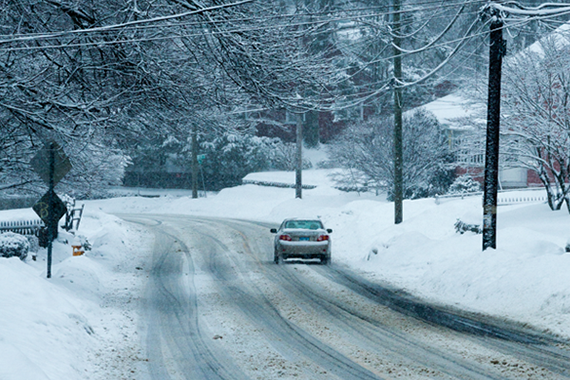Content Provided by Les Schwab Tire Center

Follow these good driving habits to help you get the most mileage between brake service:
1. Plan Ahead
Instead of stomping on the brakes just before the stop sign, traffic light or turn, slow down well before the stop. Then the engine does some of the work, reducing wear and tear on your brakes. On the highway, lift your foot off the gas pedal as soon as you see brake lights ahead.

2. Use the Right Braking Method in the Mountains
If headed downhill or over the pass on dry pavement, drive in lower gears. Here’s how: Put your vehicle in the gear that allows you to travel at the safe speed when you start down the incline. Then apply the brakes intermittently with light pressure for about five seconds if your car speeds up, so you maintain the right speed. As in #1, this will let the engine do some of the work.
Note: This only slightly increases wear and tear on your engine. In normal driving, the “front face” of the gears and transmission wear down. With this kind of engine braking, the “back face” of the transmission does the work. You rarely engage the back face, so it’s a good trade between transmission and brake wear.
By balancing engine braking and pumping your brakes, you allow your brake system to cool. Riding the brakes down a long hill generates friction (which creates the stopping power you need). It also creates heat as your brake pads are in constant contact with the rotor. The longer the hill, the more friction and heat you generate, and the greater the wear on all brake system components — pads, shoes, fluid, brake calipers, rotors or drums and hoses.
It’s also a safety issue: Too much heat can also heat brake fluid, causing brake pedal fade, right when you need your brakes most.
Don’t use this technique when you are driving downhill in icy or slick conditions. Start at the top of the hill as slowly as possible and double the distance you’d normally give between you and the driver ahead. Assuming you’re driving a passenger vehicle (not a big rig), leave your auto in normal drive gear and use light, steady pressure on the brake pedal to maintain the right speed.

This allows your antilock braking system (ABS) to kick in instantly if you lose traction. When you use your engine for braking by downshifting, only your drive tires slow the car. (Your drive tires are the front two in a front-wheel-drive auto, back tires in a rear-wheel drive, and all tires if you’re driving an AWD or 4WD vehicle). If the drive tires lose traction and your car starts to slide, the ABS won’t engage and you can lose control.
If you use the brakes instead, the ABS is ready to engage. ABS maintains traction by making sure all four tires slow at the same rate when you apply the brakes. You’ll minimize fishtailing and be able to steer in the proper direction. (Read more about how ABS works.)
3. Follow the Three-second Rule
Pick a stationary object even with the car in front of you — a sign, a building, or a side road all work well. Then count to three. If you pass that object before you get to three, you need to back off and leave more space.
Remember driver’s ed? It was all about defensive driving and safe following distance. This style of driving is not only safest; it’s the easiest on your brake system. Stop-and-go traffic puts high demands on your brakes and decreases brake pad life. You can reduce the wear on your brakes by leaving enough space between you and the car ahead so you don’t have to tap the brakes as often.
Save Your Brakes: Drive Smart
Brake pads, shoes, drums and brake rotors will eventually need service for regular wear and tear. Be sure to follow your owner’s manual guidelines. If you think something’s wrong with your brakes, or one of your dashboard brake indicators is lit up, don’t wait to get your brakes checked.
Bottom line: Drive defensively, drive smart, and you’ll extend the life of your brakes.
